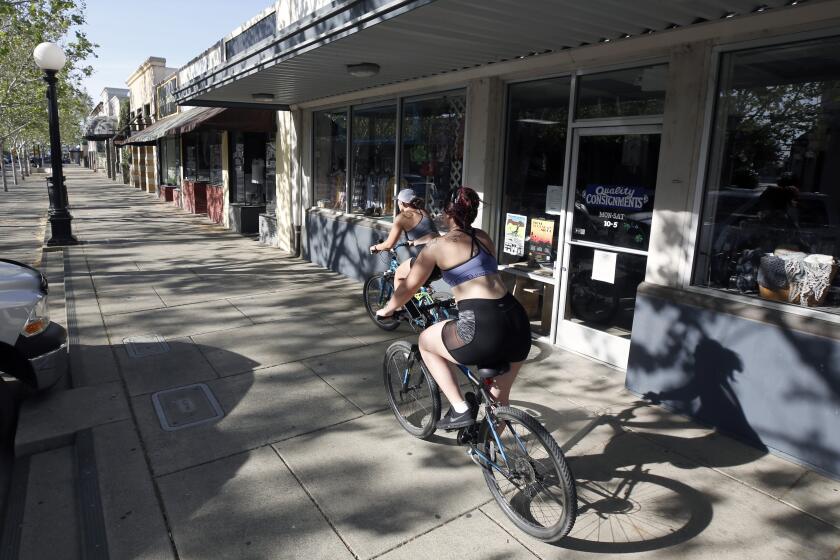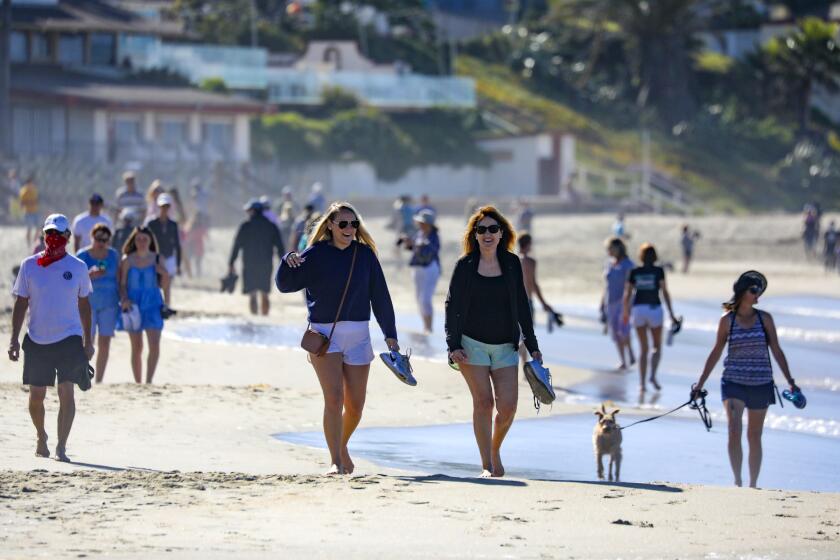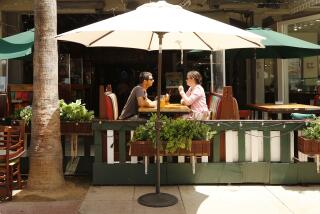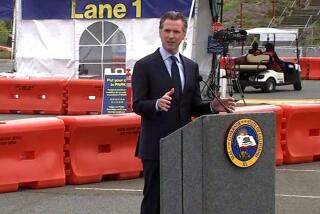These California businesses can reopen this week, and these can’t
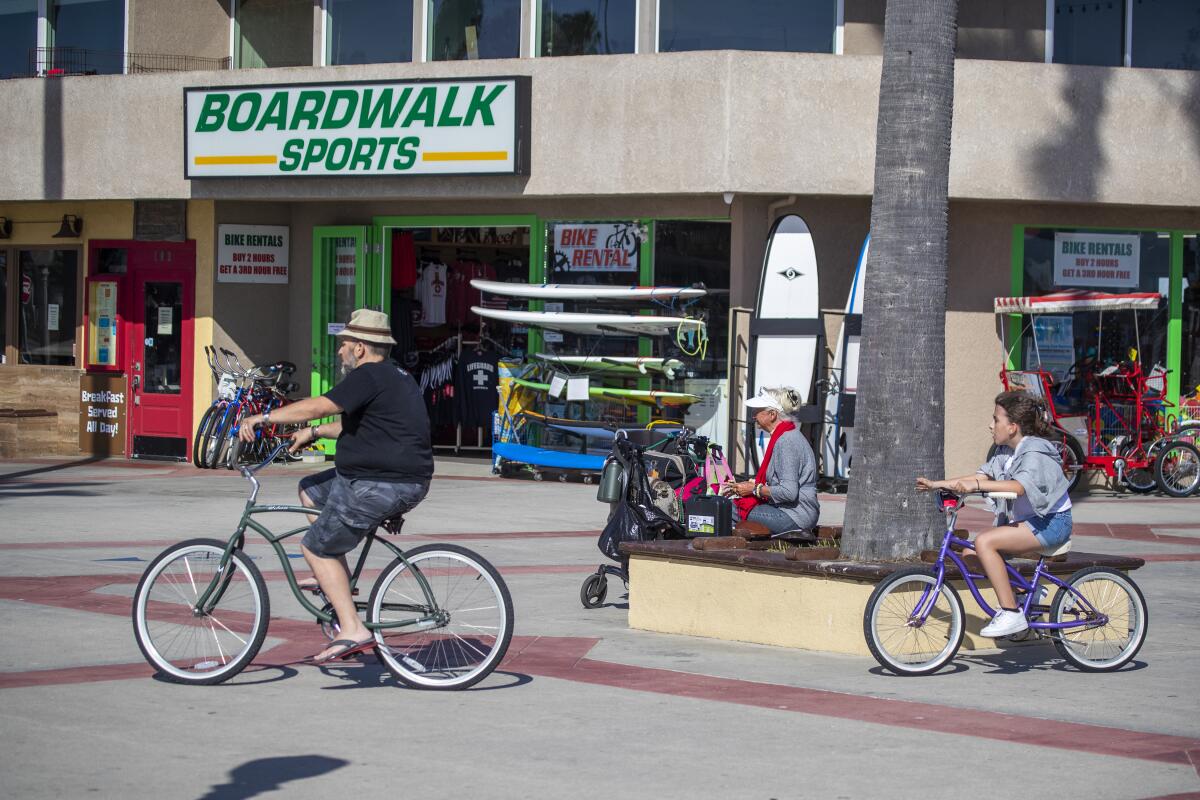
Gov. Gavin Newsom has announced that some stay-at-home rules will be modestly eased later this week.
He said details would be provided later in the week, but here are some highlights:
Businesses that can open
Bookstores, music stores, toy stores, florists, sporting goods retailers, clothing stores and others can reopen for pickup as early as Friday. Additional businesses could be named later this week, also with curbside pickup.
Right now, only essential businesses such as grocery stores, drug stores, medical offices, gas stations and auto repair are open, with social distancing. Factories that supply those businesses would also be allowed to resume.
Businesses that can’t
Offices, shopping malls, and seated dining at restaurants are still ordered shut. Personal grooming businesses, entertainment venues, live concerts and sports are also not included in the first phase of Newsom’s reopening plan.
Local controls
There will be more decision-making at the local level, allowing some communities to move further at their own pace instead of adhering to a uniform policy across the state. Some rural counties that have not been hard hit by the coronavirus have been asking for this.
Some coronavirus-related regulations were relaxed in California’s Yuba and Sutter counties, letting some businesses reopen starting Monday.
Benchmarks
If counties want to do more, they must first meet certain requirements for hospital beds, testing kits and the ability to track infected people and trace their contacts.
While some counties want to reopen now, other more hard-hit counties in the Bay Area and Southern California are urging caution.
Newsom said communities that reopen businesses more slowly, like the San Francisco Bay Area, can still do so. Pandemic conditions vary widely throughout the state, he said.
Varying conditions
Some counties — Modoc, Yuba and Sutter counties in Northern California — have defied Newsom’s orders and allowed more or all kinds of businesses to reopen beyond the statewide order.
The governor declined to say Monday whether there would be consequences for those counties. He added that the overwhelming majority of California’s 58 counties are doing the right thing.
Los Angeles County’s public health director, Barbara Ferrer, said Monday that officials will be sharing its recovery plans this week. “Wherever it’s possible to safely reopen, we’ll be doing so as quickly as possible,” she said.
The governor has urged Californians to stay the course, saying the state is moving in the right direction but needs more time in the fight against the spread of the coronavirus.
California is in Phase One of the governor’s reopening plan. The easing planned for this week would cover Phase Two.
“We are entering into the next phase this week,” Newsom said at his Monday news conference. “This is a very positive sign, and it’s happened only for one reason: The data says it can happen.”
Stage 1: safety and preparedness
This phase is now underway.
- Continue to build out testing and contact-tracing capabilities and hospital surge capacity.
- Continue to make workplaces as safe as possible for essential workers.
- Work on adaptations to the physical setting and workflow in hospitals and other settings.
- Build a safety net for essential workforce.
- Make personal protective equipment more widely available.
- Incorporate individual behavior changes.
- Prepare safety guidelines for an expanded force of front-line workers.
Stage 2: Retail and lower-risk workplaces reopen.
Beginning Friday:
- More retail stores (with curbside pickup)
- Manufacturing and logistics to support retail
Later on:
- Offices (when teleworking is not possible)
- Additional public spaces
- Modified schools programs and child care
- Potentially beginning the academic school year in July or August
An expanded workforce safety net could mean:
- Wage replacement so workers can stay home when sick.
Adaptions for reopened schools and child-care facilities could mean:
- Summer programs and an earlier start to the next academic year, in July or August.
What’s needed to get from Stage 1 to Stage 2?
Government actions:
- Enacting policies that allow people to stay home when they’re sick.
- Providing guidance on how to reduce coronavirus risk.
Business actions:
- Provide wage replacement so workers can stay home when sick.
- Implement adaptations to lower-risk workplaces.
- Allow employees to continue to work from home when possible.
Individual actions:
- Use safety precautions, such as physical distancing and wearing masks.
- Avoid all nonessential travel.
- Support and care for people who are at high risk.
Key goals to hit before moving to Stage 2:
- Hospitalization and ICU trends are stable.
- Hospital surge capacity can meet demand.
- There is sufficient personal protective equipment to meet demand.
- Testing capacity is sufficient to meet demand.
- There’s contact-tracing capacity statewide.
The transition to Stage 2 will occur through a statewide modification to the stay-at-home order.
Opportunity for regional variations
During Stage 2, counties may choose to relax stricter local orders at their own pace.
After Stage 2, once a statewide COVID-19 surveillance system is made possible through testing, further regional variations could be supported.
The state will consult and collaborate closely with local governments.
Stage 3: Higher-risk workplaces reopen
The following sectors reopen:
- Personal care (hair and nail salons, gyms)
- Entertainment venues (movie theaters, sports without live audiences)
- In-person religious services (churches, weddings)
Stage 4: Stay-at-home order ends
At this point, therapeutics will have been developed and other key goals met. These events and sites will then reopen:
- Concerts
- Convention centers
- Sports events with live audiences
Officials said there is no timetable for more businesses to open under Stage 2 or when Stages 3 and 4 would occur.
More to Read
Sign up for Essential California
The most important California stories and recommendations in your inbox every morning.
You may occasionally receive promotional content from the Los Angeles Times.
